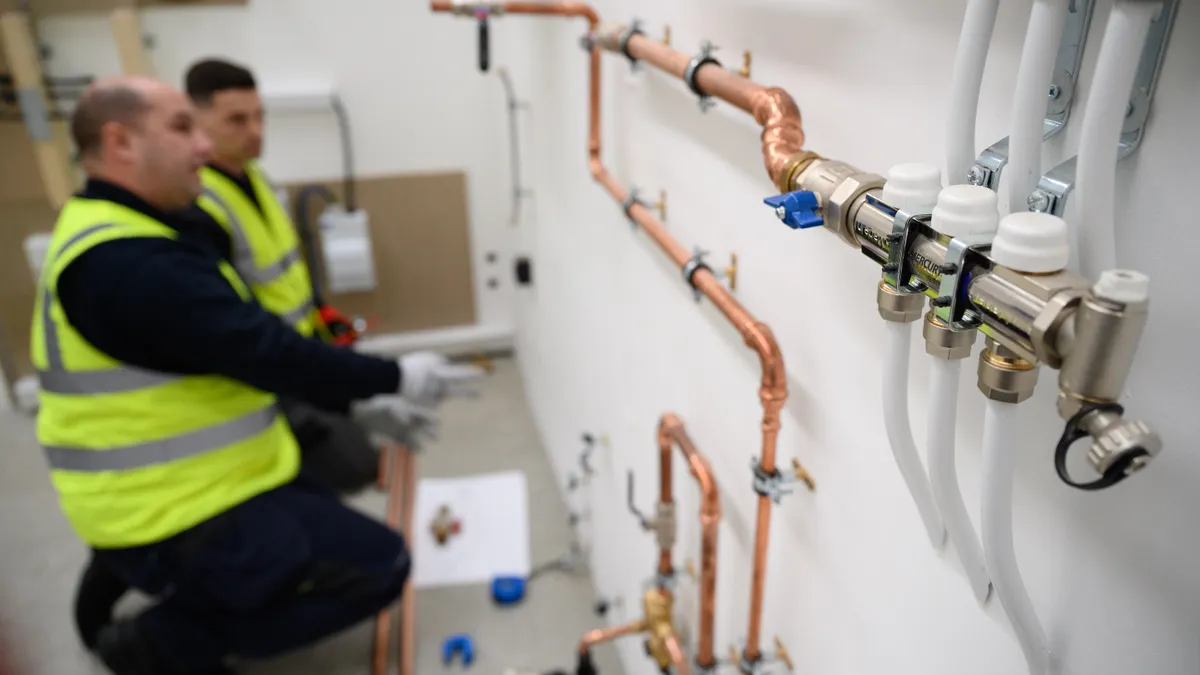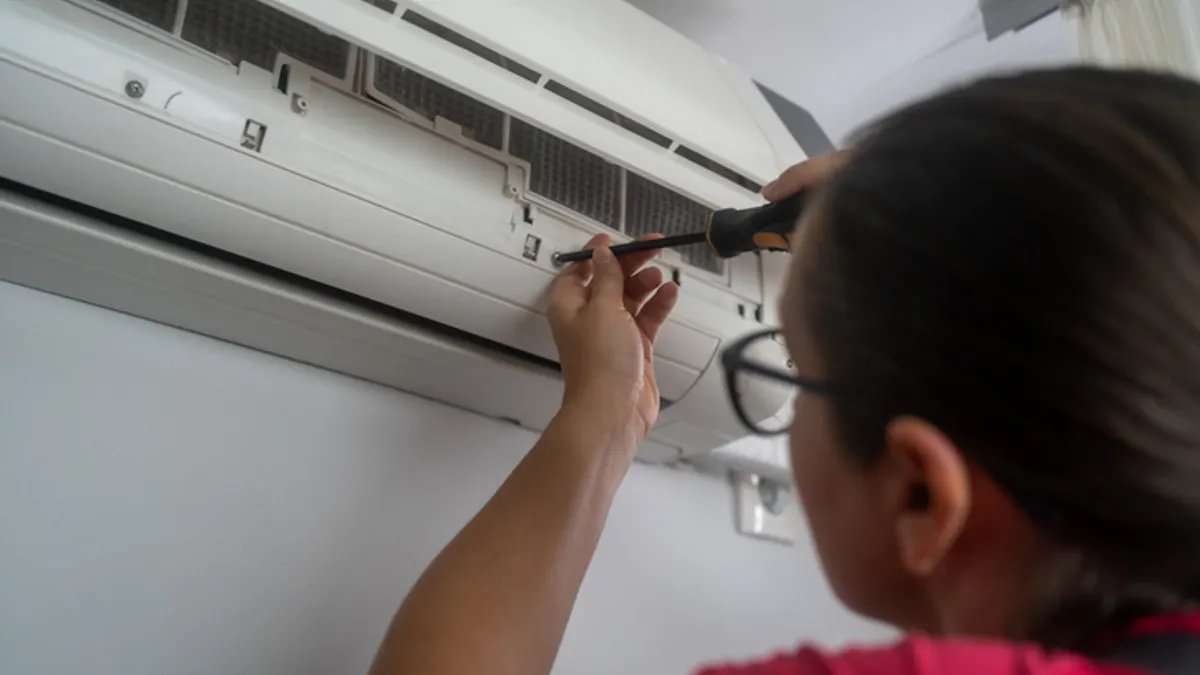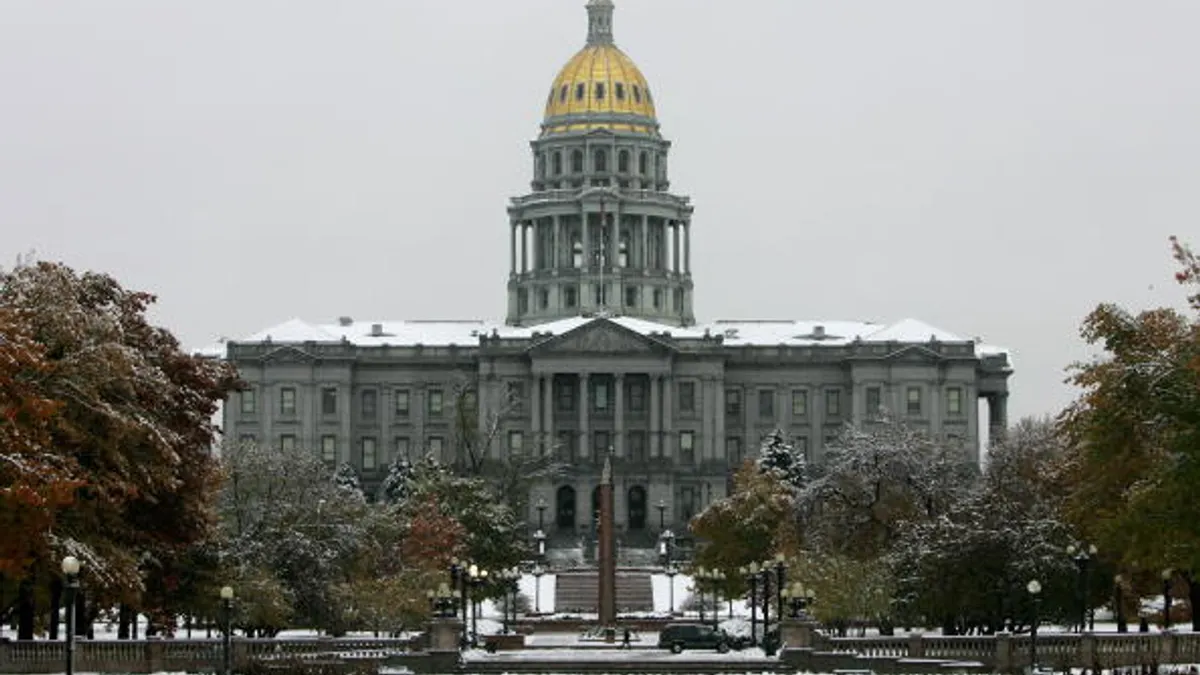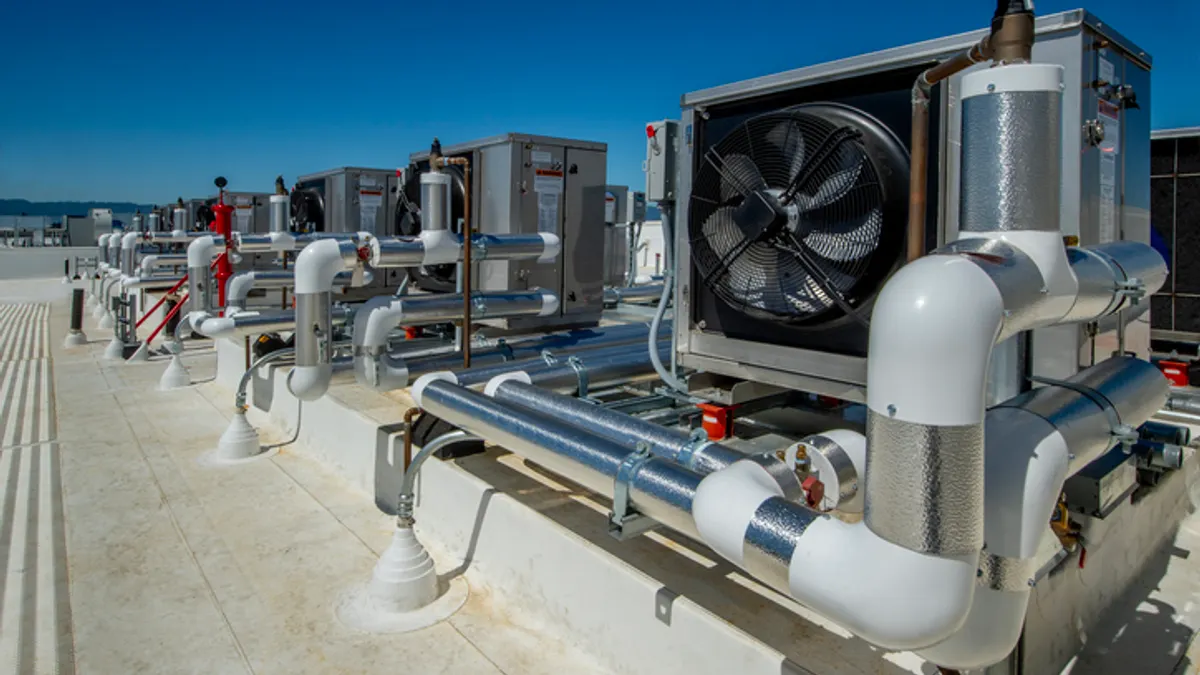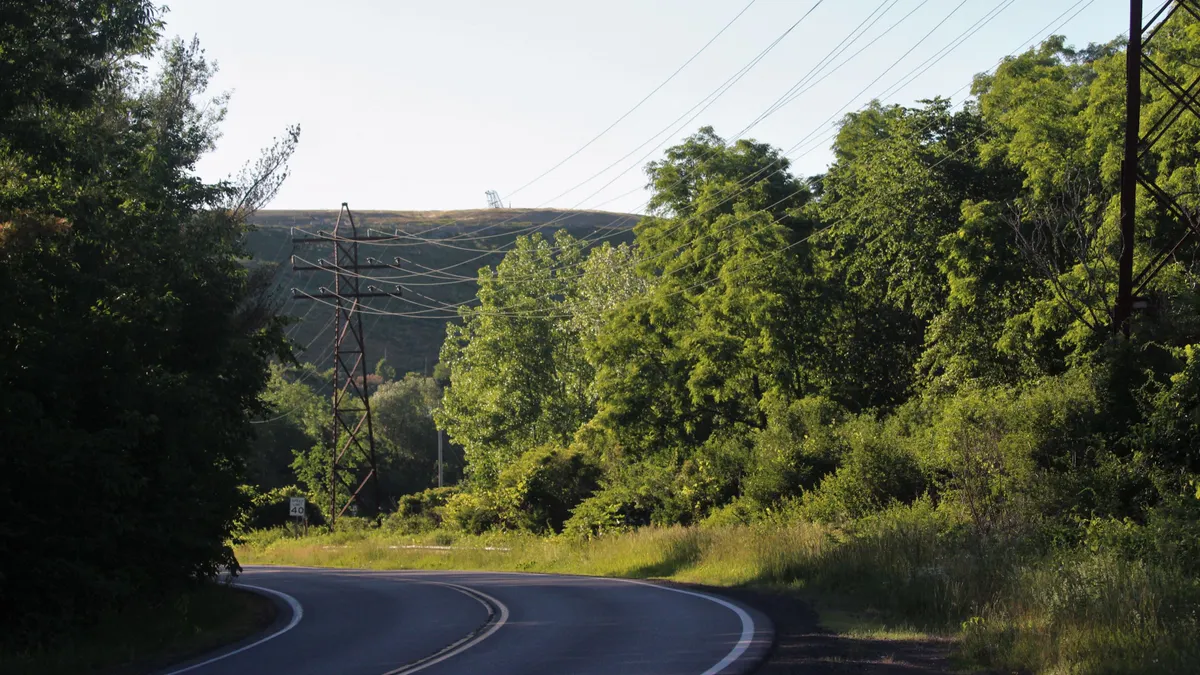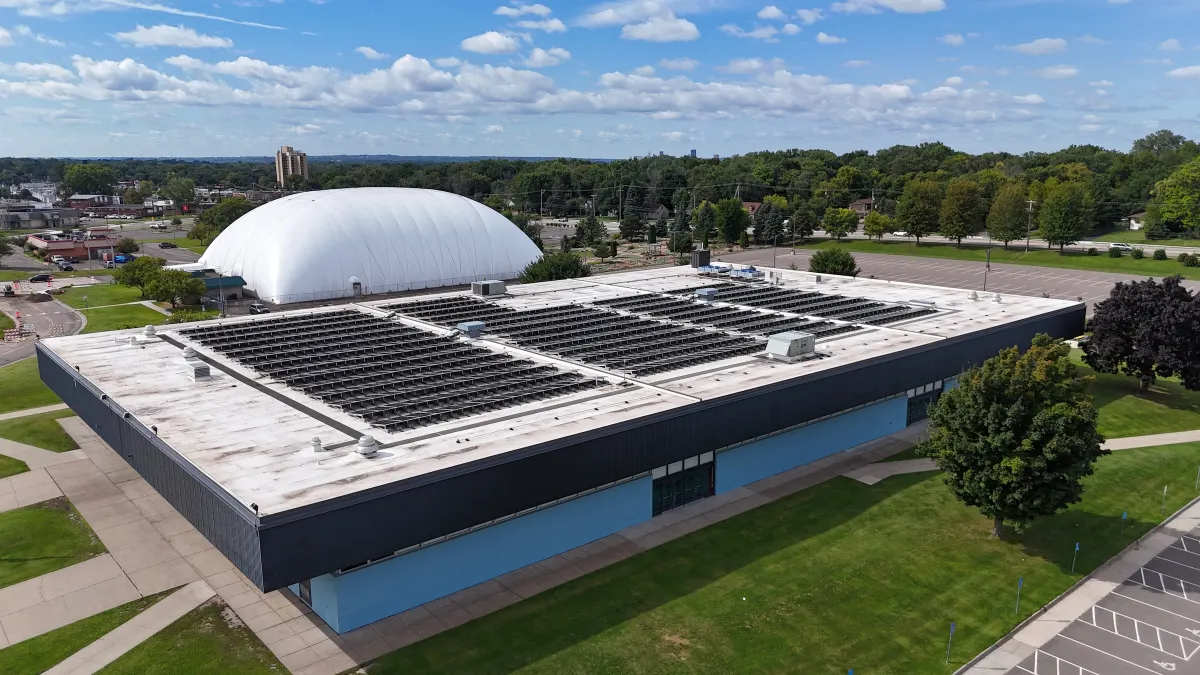Facilities’ heating operations have traditionally relied on fossil fuel-powered steam and hot-water systems that distribute water at around 180 or 200 degrees Fahrenheit. Facility managers switching to an electric heat pump system, which uses water at a lower temperature, should plan for how the change will impact infrastructure and operations, HVAC specialists say.
“Heat pumps … deliver water at anywhere from 120 to 140 degrees,” Jeff Becksfort, associate principal at PAE Engineering, said in an interview. “You need to think about all the things that you’re using where you’re putting heat into the space. You can’t just transition overnight from one to the other. You do need to think ahead. You have to have a plan for it.”
PAE is the engineer of record for the Port of Portland expansion project at the Portland International Airport in Oregon, a 1 million-square-foot, sustainability-focused initiative that includes a new terminal and an all-electric groundwater heat pump that exchanges heat with water from an aquifer.
The Portland-based engineering firm prepared the airport over the last dozen years or so to be able to use heat pumps when the time came, according to Becksfort. For example, it analyzed all of the heating coils within the building to see if they needed replacing. Some were “sufficient to utilize a lower-temperature water,” he said.
“At the point we are now, we’re replacing boilers with groundwater heat pumps that are going to circulate that lower-temperature heating water into the building,” Becksfort said. “So it’s something we’ve done over time. You need to analyze your system and prepare to transition.”
In water heating systems with 180-degree Fahrenheit supply water, one-row coils are typically sufficient to provide the required heating capacity, according to HVAC manufacturer Trane in a 2022 report on low-temperature heating. If the water comes in at a lower temperature, more coils are typically needed. “When using a lower [water supply] temperature (such as 140°F or 105°F), [variable-air volume] terminal units likely need to be equipped with multiple-row coils,” the report says.
Providing the same capacity with a lower hot water supply temperature also requires a higher fluid rate, which affects the size of pipes, pumps and valves and can also increase pumping energy use, Trane says.
A U.S. Department of Energy guidance document on electrifying large commercial buildings reinforces the idea that lower water temperatures can require downstream changes to coils and other infrastructure.
“Running systems at lower hot water temperatures in some cases would require changes to the fan coil units or VAV boxes at the end of the thermal distribution network,” DOE says in the document. “This would ensure that the same level of heating is provided with a lower temperature distribution.”
DOE recommends incrementally lowering hot water temperature while testing building operation and comfort level to see what temperature is actually required. That “would help building owners evaluate how low they could drop the water temperature without having to make costly adjustments,” DOE says.
Factoring in these impacts can increase the complexity of upgrades, according to Indu, director of energy at the University of Albany in New York.
The university earlier this year began a $30 million decarbonization project. When complete, it will be able to shut down its gas-fired boilers in the summer through the use of a high-efficiency electric centrifugal chiller and heat recovery chiller, both connected to a new geothermal well field in a campus parking lot.
With fossil fuel-powered boilers, “you need very little steam or high-temperature hot water to send out massive amounts of heat to an entire campus, so pipe sizes are smaller,” Indu said in an interview. “The problem is that you cannot make steam or high-temperature hot water without burning some sort of fossil fuel. You can’t electrify that system.”
To overcome the limitations of existing pipes in delivering lower-temperature supply, the university is evaluating the construction of a satellite energy hub on the other side of campus, closer to major loads, that would help heat and cool adjacent buildings, Indu said. The university will then build new pipe networks and electrify the plant using existing piping infrastructure to “feed as much of the campus as we can while that other plant starts to pick up some slack from buildings on the other end,” Indu said.
“Campuses, especially … are complex systems,” Indu said. “You can’t just look at one component and see what’s the best for this building or this specific system. You have to look at campus as a whole. If I make this change here, how does this impact other things on campus?”
At the Portland International Airport, which was also previously served by a steam system, PAE Engineers was able to find a way to reuse existing pipes instead of replacing them.
“We had steam pipes that went from a central utility plant to the terminal through a long tunnel,” Becksfort said. “There were two eight-inch steam supply lines and one condensate that comes back, because you have to return condensate for steam. We’re actually still using those pipes, and we’re going to use them for heating water now. It can be done so that you can utilize that piping. It doesn’t always need to be upsized.”
These and other variables require analyzing the system to properly size it, minimizing the load at the end so you can use the same size of piping, he said.
Ultimately, once these issues are thought through, switching to a heat pump is not difficult, according to Becksfort. “It's really just replacing those end devices, or determining that the end devices you have already are going to work for that lower-temperature water,” he said.


